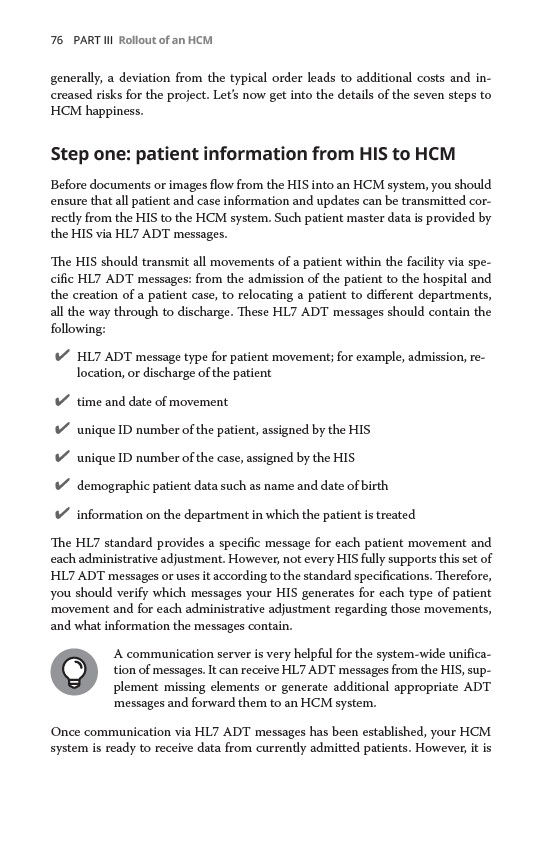
76 PART III Rollout of an HCM
generally, a deviation from the typical order leads to additional costs and increased
risks for the project. Let’s now get into the details of the seven steps to
HCM happiness.
Step one: patient information from HIS to HCM
Before documents or images flow from the HIS into an HCM system, you should
ensure that all patient and case information and updates can be transmitted correctly
from the HIS to the HCM system. Such patient master data is provided by
the HIS via HL7 ADT messages.
The HIS should transmit all movements of a patient within the facility via specific
HL7 ADT messages: from the admission of the patient to the hospital and
the creation of a patient case, to relocating a patient to different departments,
all the way through to discharge. These HL7 ADT messages should contain the
following:
✔✔HL7 ADT message type for patient movement; for example, admission, relocation,
or discharge of the patient
✔✔ time and date of movement
✔✔unique ID number of the patient, assigned by the HIS
✔✔unique ID number of the case, assigned by the HIS
✔✔demographic patient data such as name and date of birth
✔✔ information on the department in which the patient is treated
The HL7 standard provides a specific message for each patient movement and
each administrative adjustment. However, not every HIS fully supports this set of
HL7 ADT messages or uses it according to the standard specifications. Therefore,
you should verify which messages your HIS generates for each type of patient
movement and for each administrative adjustment regarding those movements,
and what information the messages contain.
A communication server is very helpful for the system-wide unification
of messages. It can receive HL7 ADT messages from the HIS, supplement
missing elements or generate additional appropriate ADT
messages and forward them to an HCM system.
Once communication via HL7 ADT messages has been established, your HCM
system is ready to receive data from currently admitted patients. However, it is